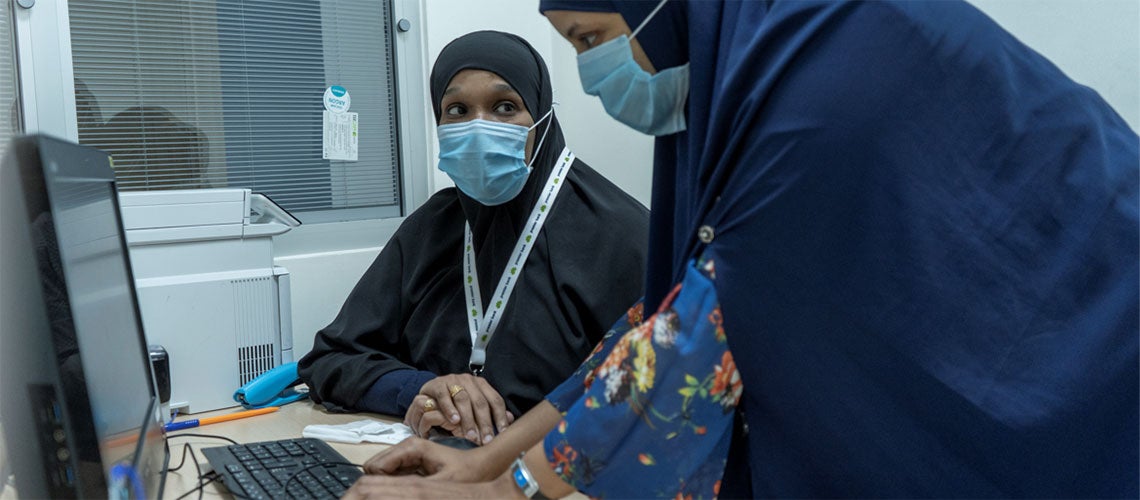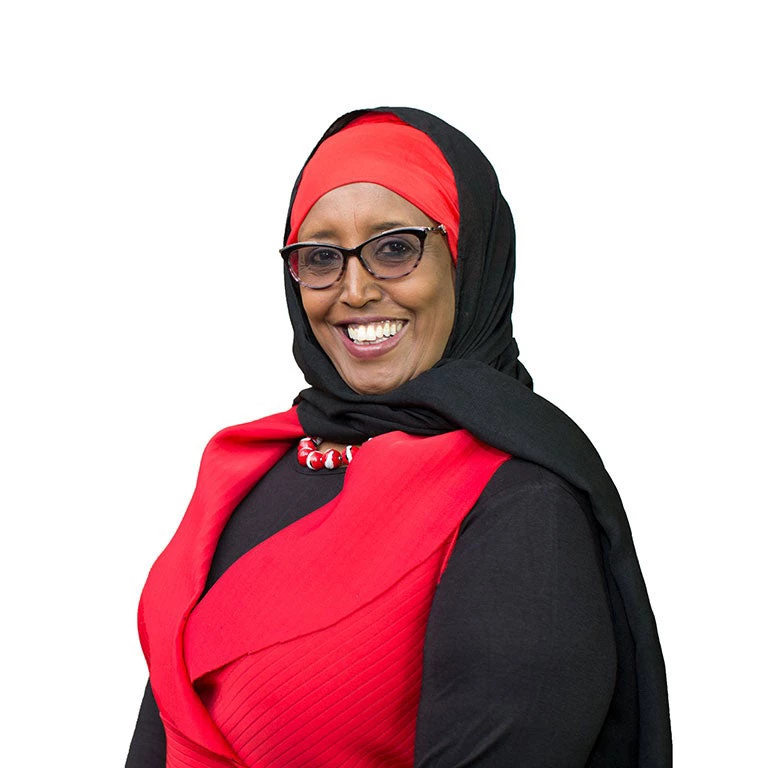 في الصومال، غالبا ما توظف النساء نساء أخريات، وتسهم المنشآت المنزلية التي تملكها المرأة في توفير وظيفة واحدة من كل أربع وظائف للنساء.
في الصومال، غالبا ما توظف النساء نساء أخريات، وتسهم المنشآت المنزلية التي تملكها المرأة في توفير وظيفة واحدة من كل أربع وظائف للنساء.
Realizing the earnings potential of the female workforce is essential for Somalia to grow and provide better living standards for 70% of the population estimated to live below the poverty line. Today, around only four in 10 women are actively engaged in the workforce, compared to seven in 10 men.
Simply having a job is not enough. What matters is having a job good enough to escape poverty and to generate a meaningful income . When women and men have equal opportunities to shape their own lives and contribute to their families, communities, and countries, it leads to enhanced productivity and is a powerful way to accelerate development.
The challenge of creating more and better jobs for women and men is urgent. In Somalia, productivity is less than a quarter of the Sub-Saharan African average, and a youthful population means that each year an estimated 161,000 new workers are expected to enter the labor force through 2025.
The Somalia Country Economic Memorandum looks at the types of jobs people do and how they correlate with productivity. We worked with a team of local researchers to hear Somali perspectives on how challenges could be overcome. This is what we found:
Where do jobs come from?
- Entrepreneurship is widespread and forms part of a proud tradition, particularly given limited formal wage employment opportunities.
- Household enterprises account for more than half of all steady jobs, while established businesses contribute to 1 in 15 jobs. Household enterprises are also associated with lower levels of poverty.
- Services dominate, particularly retail. Nearly half of all household enterprise jobs and 70 percent of jobs in established businesses come from the retail sector.
- Large established businesses in Somalia hire more rapidly than peer countries, but the problem is that these opportunities are few and far between.
- Women are more likely to hire other women. Women’s ownership of household enterprises contributes to one in four jobs for women.
What determines productivity, in terms of sales per worker, per day?
- Size matters. Larger businesses are 10 times more productive than household enterprises.
- Women fare worse, earning 40% less than their male counterparts for similar types of jobs compared to a regional average of 34%.
- Education surprisingly only correlates with revenues in established businesses only.
What holds women back – explaining the gender productivity gap
- Norms and perceptions of women’s roles in households and society constrain their access to productive opportunities. In many instances women are only supported to work if the husband is perceived as not earning enough for the family.
- Women are excluded from more profitable segments of the value chain, such as catching and exporting fish, trekking with animals in search of higher market prices, and currency exchange.
- Women lack access to finance and capital to start and invest in a business. While a rotational savings system known as hagbaad can offer access to finance, this is small in scale and may not be prioritized for female-owned businesses that are perceived as being less profitable and riskier.
- In a context of nascent state-building, women are largely absent from decision-making and networks where information is shared on trading practices.
Addressing challenges so that more and better jobs can be created
By building on what already exists, supporting entrepreneurship could have far-reaching benefits for job creation, especially for women . The top self-reported challenges that entrepreneurs face include access to finance and land. In the short run, taking loans will remain risky for small entrepreneurs, and grant funding can play an important role. Over the medium-term, supporting the growth of firms through an improved enabling environment could aid rapid job creation. Developing human capital, especially for women, can also strengthen the availability of relevant skills for those who are currently excluded.
Trade in both goods and services could be supported by addressing the drivers of geographical fragmentation across Somalia. As Somalia continues to urbanize, facilitating trade can support greater integration, but this requires tackling high transport costs which are currently driven by illegal checkpoints and multiple taxation paid to both state and non-state actors.
Diversifying from retail activities could also support higher productivity. Other value chains that hold promise for job creation include hospitality, transport, and the food sector including fisheries. New agricultural value chains could be developed, but securing produce and reaching markets requires having a decent energy supply, roads in place and better security conditions.
What is next for Somalia?
Somalia certainly has challenges, but the possibilities are there. As Somalia continues its efforts towards debt relief through the heavily poor countries initiative, there is a possibility of accessing new resources at completion point which could offer a fresh start . Investments are also in the works to support access to finance, improved energy supply, diversification to the fisheries sector and a second chance for women’s education opportunities. These are some of the areas that we are supporting through our Inclusive Growth Development Policy Operation series, International Development Association investments and broader policy dialogue. As the country prepares for a new government, an ambitious reform agenda awaits, and one which can bring the promise of more and better jobs a bit closer.
This blog is part of a blog series curated by the World Bank’s Somalia Women’s Empowerment Platform that highlight evidence and solutions on women’s and girls’ empowerment in Somalia.





Join the Conversation